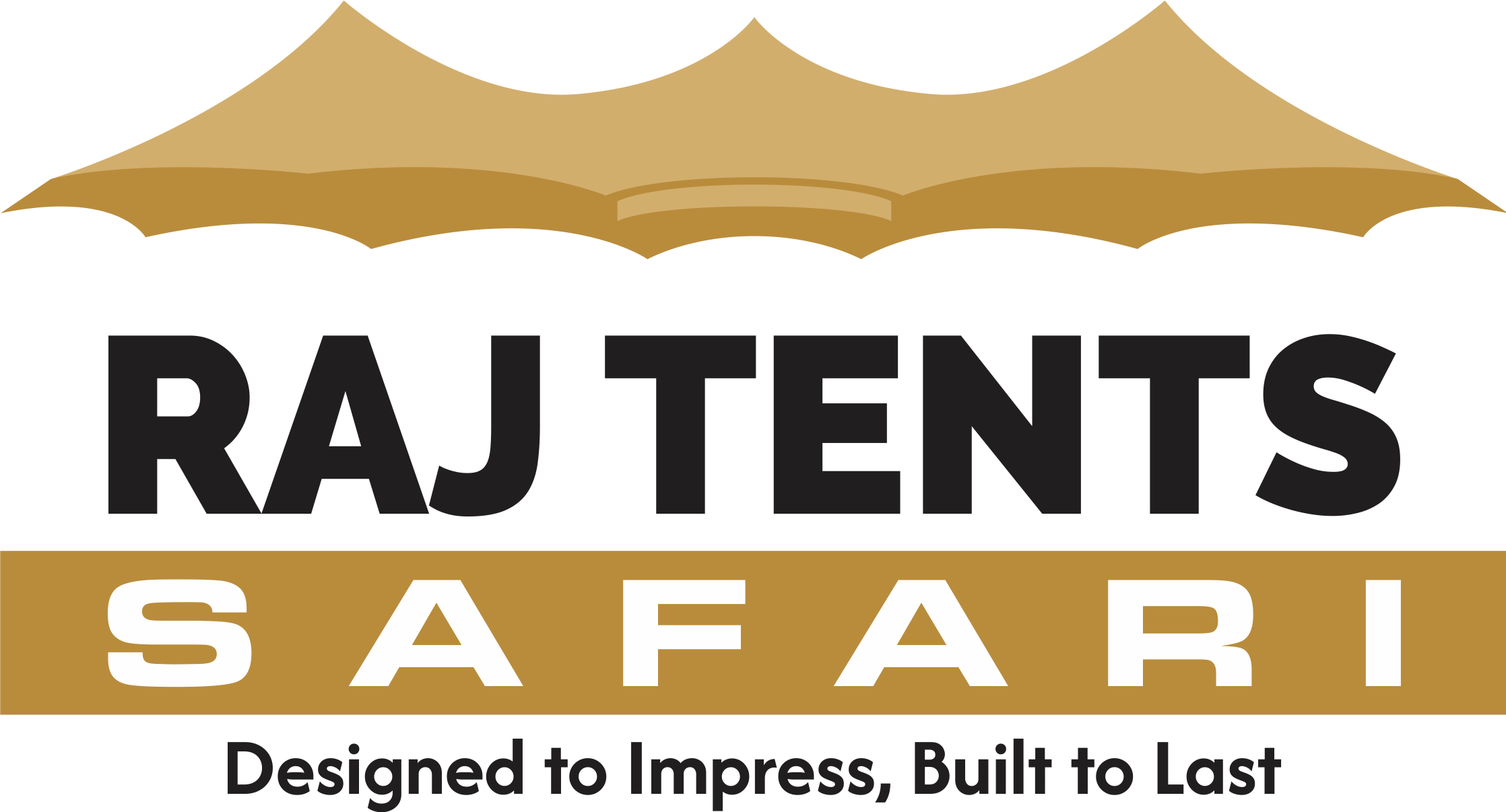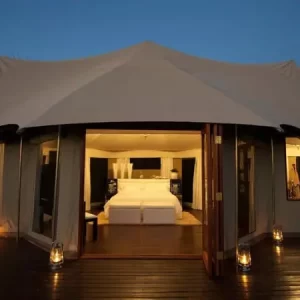Are you someone who loves the idea of camping but still wants a bit of luxury and comfort? Or maybe you prefer the stability and privacy of a traditional building for your stay?
If you are confused between staying in a glamping tent or a physical building, well, you are not alone!
Glamping, a mix of glamorous camping and outdoor adventure, is gaining more popularity as it offers a unique experience in nature. On the other hand, physical buildings like hotels and resorts have always been the go-to for comfort and convenience.
In this blog, we will take a closer look at the pros and cons of both Glamping Tents and physical buildings so that you can figure out which option is best for your next trip.
Let’s compare the two!
An Overview of Glamping Tents
As mentioned above, glamping is a fusion of glamorous and camping that combines luxury and the great outdoors perfectly. You can take it as experiencing all the joys of camping, but with comfort. This way, you don’t have to struggle with tent poles, sleep in sleeping bags, or stay without electricity. Instead, you get cozy beds, electricity, delicious food, and even Wi-Fi. It is an upgraded camping experience that keeps you well connected to nature while enjoying luxury.
Pros of Glamping Tents
- Unique Experience: Tents for glamping provide a unique combination of luxury and nature, which is a one-of-a-kind experience where you can enjoy the outdoors without sacrificing comfort.
- Eco-Friendly:Most of the tents that are used for glamping are designed to be more sustainable than traditional buildings. These use natural materials, which reduces the impact on the environment.
- Quick Setup: These are easy to assemble and take down, which makes them ideal for temporary or seasonal use. This flexibility also makes them perfect for events or vacations.
- Spacious & Comfortable: Many glamping tents are designed with plenty of space and even offer a wide range of features such as king-sized beds, heating, electricity, and stylish decor to ensure a comfortable stay for guests.
- Less Maintenance: These require less upkeep as compared to the physical buildings. There is no need to worry about the ongoing costs of utilities or major repairs.
Cons of Glamping Tents
- Limited Long-Term Durability:While the tents are sturdy, they are not as durable as permanent structures. Constant exposure to the elements may lead to wear and tear over time.
- Initial Setup Cost: The initial setup cost for high-quality tents can be quite high, especially for larger or more luxurious setups.
- Security Concerns: these tents may not offer the same level of security as physical buildings, especially in more remote or isolated areas.
An Overview of Physical Buildings
Physical buildings are permanent structures that are designed to provide long-term shelter and spaces. They are constructed with materials like brick, concrete, wood, and steel and offer a more stable, reliable solution for housing, offices, and event venues. Unlike temporary structures such as tents, physical buildings are designed in such a manner that they can stand for decades or even centuries.
Pros of Physical Buildings
- Durability and Longevity: Physical buildings are built to last for years to come. They can stand for many decades, which makes them ideal for permanent living spaces or commercial properties.
- Year-Round Use:Unlike tents for glamping that may be limited by weather conditions, physical buildings can be used year-round and protect against all types of weather.
- Security:Physical buildings provide a higher level of security than tents, as they come with secure locks, durable walls, and built-in safety features such as alarms.
- Space & Customization:Physical buildings offer more space than tents and can be customized to meet specific needs. These are perfect for living, office work, or hosting events.
- More Comfort:A physical building offers more comfort than tents, especially when it comes to insulation and personal space.
Cons of Physical Buildings
- Longer Setup Time:Building a physical structure takes a longer time than setting up a tent for a glamping adventure. The process can take months or even years.
- Maintenance Costs: Physical buildings require regular maintenance, including repairs, cleaning, and upgrades to stay functional and safe.
- Limited Flexibility:Once a physical building is built in a particular location, it is not easy to relocate. This lack of flexibility can be a disadvantage for individuals or businesses who want to move their living or working space.
Which is Right for You?
- Glamping Tents:These are ideal for temporary outdoor experiences. They are more affordable, flexible, and eco-friendly, with minimal maintenance required. However, they offer limited amenities and are best for short-term use.
- Physical Buildings:These are perfect for long-term and permanent spaces. They come with full amenities and greater comfort, but require a higher initial investment and ongoing maintenance and are fixed in location.
If you are looking for flexibility and a unique outdoor experience, glamping tents are the way to go. For long-term comfort and security, physical buildings are the better choice.
Wrapping Up
That brings us to the end of this blog!
So, both glamping tents and physical buildings provide distinct pros and cons. But the choice ultimately depends on the experience you are aiming to create and the resources available.
Other than that, if you are looking for a premium, versatile, and environmentally conscious option for your glamping adventures, Glamping Tents stands out as the best manufacturer of luxury tents in India. We are known for offering high-quality, durable, and stylish tents tailored to enhance your outdoor glamping experience.
Reach out to us and get your tent customized for your next glamping adventure!
Contact us: +91–9799802662





